Foxtail Fern: The Complete Care & Growing Guide
I’ve loved these tough yet attractive plants ever since I saw a small one in a hanging pot in a greenhouse at the Brooklyn Botanic Garden many, many moons ago. This is all I’ve learned about growing Foxtail Fern plants in two different climate zones.
As it ages, the stems get a bizarrely delightful, twisting form and it reminds me of Medusa’s serpent-filled head. This sculptural, feathery plant has an edgy feel and definitely isn’t delicate so no need to tiptoe around one.
This evergreen perennial (which is not a true fern by the way) is easy on the eyes and easy when it comes to maintenance.
Botanical Name: Asparagus densiflorus “Meyersii” Common Name: Foxtail Fern, Myers Fern (sometimes seen as Asparagus Foxtail Fern or Foxtail Asparagus Fern)
This post may contain affiliate links, you can read our policies here.
How to Care for a Foxtail Fern (Myers Fern)
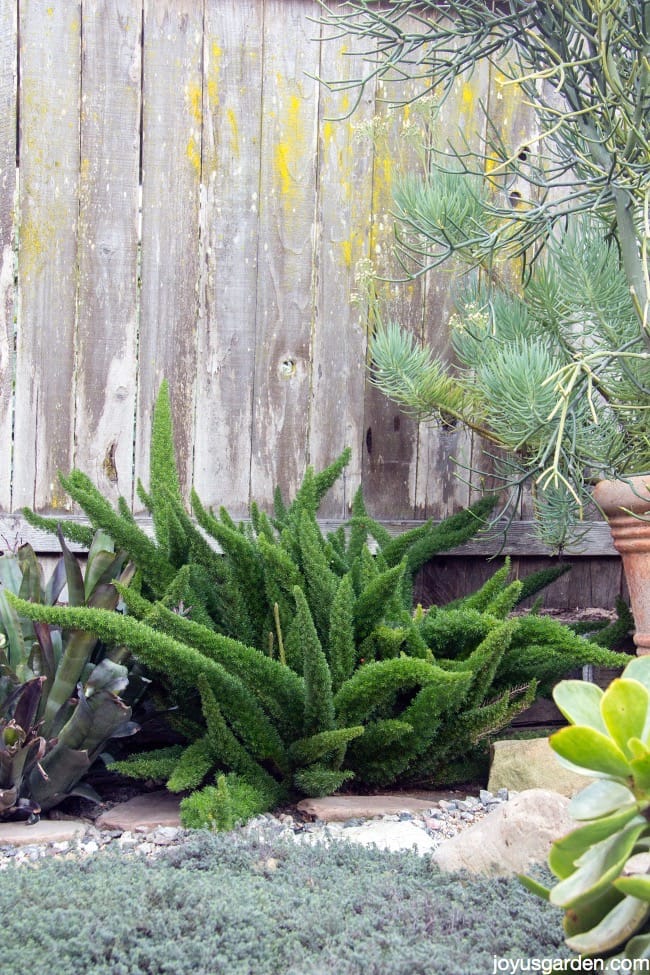
USDA Hardiness Zone
Foxtail Fern plants grow best in hardiness zones 9-11. They’ll show damage if the temps go below 20 – 25 degrees F.
I’ve grown them along the California coast in Santa Barbara (zones 10a & 10b) and in the Sonoran Desert in Tucson, AZ (zones 9a & 9b).
Size
The largest I’ve seen one grow to be is 3′ tall x 3.5′ wide. In the landscape trade, they’re most commonly sold in 6″, 1-gallon, and 5-gallon pots.
Foxtail Fern Light Requirements
I’ve gotten the question, Foxtail Fern sun or shade? Bright shade, partial shade, and full sun are the answers because it depends on where you’re growing one.
On the coast of southern California where I used to live, these ferns can take direct sunlight. As you go inland, partial to bright shade is best. Be sure to keep them out of the strong afternoon sun.
Here in Tucson, they do best protected from the hot afternoon sun so afternoon shade is best. I grow mine in an east exposure near a pink grapefruit tree that provides dappled shade.
Foxtail Fern Water Requirements
This plant isn’t considered to be drought tolerant but neither do they require huge amounts of water. They have a tuberous root system that stores water so be sure not to keep them too wet as this will lead to root rot.
Foxtail Fern plants prefer regular watering whether growing in the ground or in a container. The top few inches of soil can actually dry out between waterings. Yours may require a little extra water during the active growing season to keep it looking lush and full depending on what’s going on summer rain and heat wise.
In Tucson, I drip irrigate my Foxtails three times a week in the hot months. In Santa Barbara, it was once every ten days. I lived seven blocks from the beach so the fog helped with that.
Foxtail Fern Soil
They’re tolerant in regards to this and grow in a variety of soil types. They’re said to grow best in slightly acidic soil.
However, the soil in my yards in Santa Barbara and Tucson was not and is not on the acidic side and my Foxtail Ferns are doing just fine. Plants can be that way, sometimes they stretch the limits.
You want the soil mix to have good drainage, and mix in some organic matter to up the ante on the richness.
Shrubs are the backbone of any garden, here’s How To Successfully Plant Shrubs.
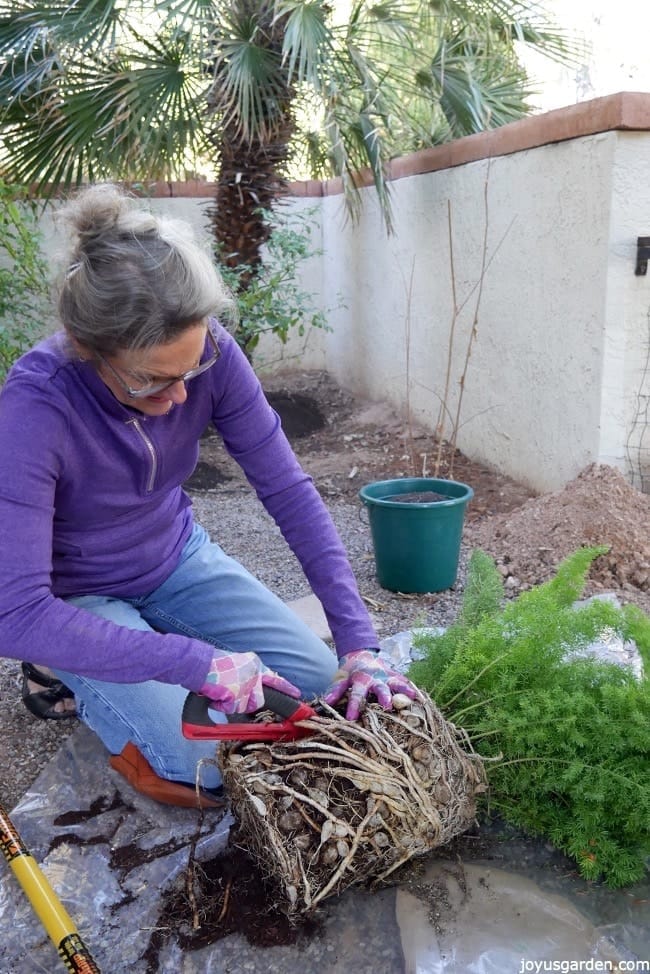
Foxtail Fern Repotting/Transplanting
A mature plant has quite a tough and extensive root ball so this can be a challenge. I tell you this from experience and you can see by looking at the above photo!
You may never have to transplant one growing in the ground. As a container plant, yours may need a new pot larger in size to accommodate the root ball as it grows and spreads.
I did a post on Dividing and Planting a Foxtail Fern which gives you an idea of what I did.
Fertilizer
I never fertilizer mine. I plant them with nice, rich organic compost and top dress them with the same every couple of years or as need be.
If you feel the need to feed your Foxtail something other than or in addition to compost, consider using something like liquid kelp or an all-purpose fertilizer.
Pruning
My Felcos aren’t well acquainted with this plant because it rarely needs pruning, maybe once a year. As it’s grown I’ve had to trim a few stems off the walkway but that’s about it. When you prune yours, be sure to cut the stems off all the way to the base.
This plant grows so densely that the older growth will sometimes crowd out and smother the undergrowth, which eventually turns brown. I prune that out too.
I do like to occasionally cut off a few stems to use in flower arrangements as I like the look and they make for long-lasting greenery.
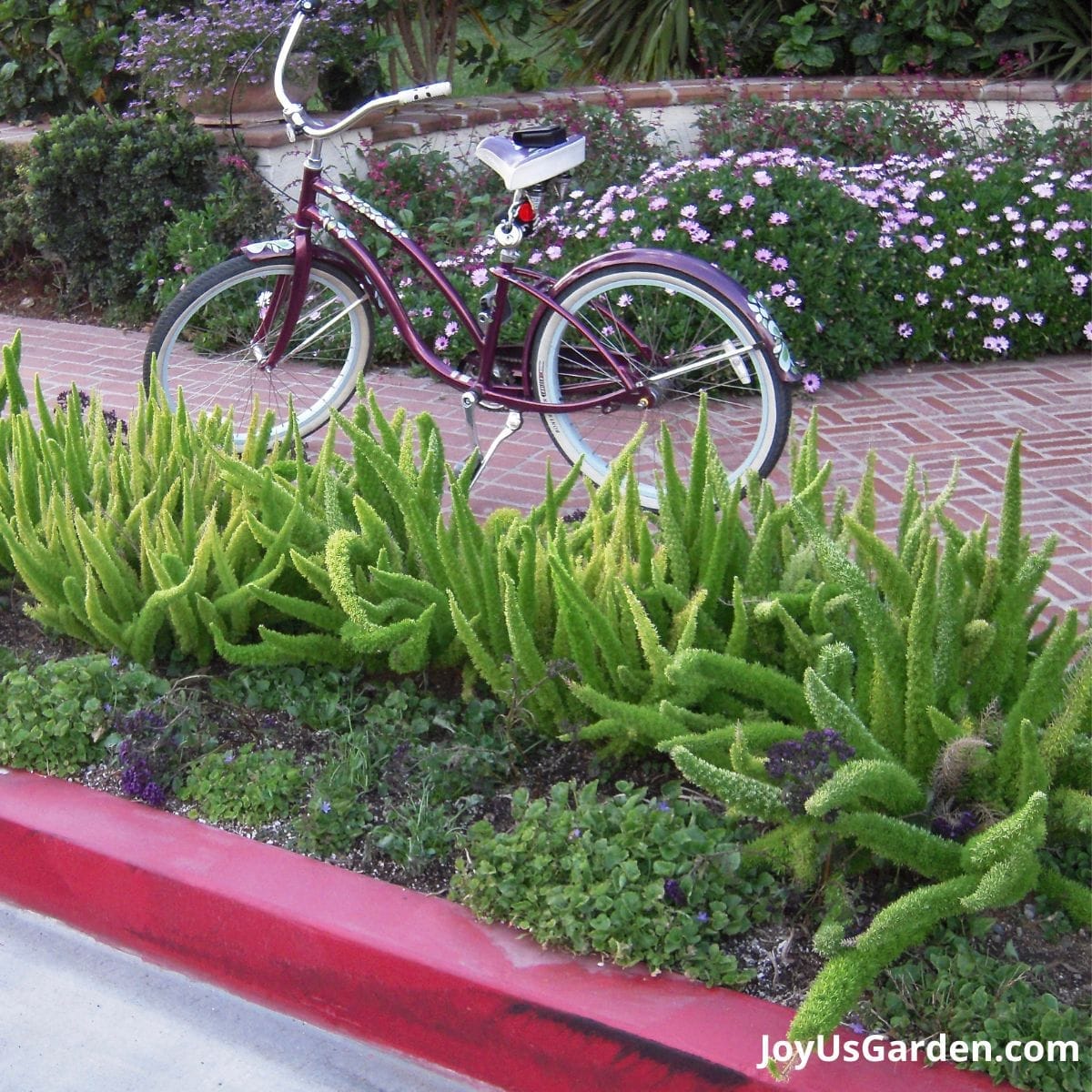
A word of warning: they have needle-like leaves, along with small thorns on the stems, that can cause skin irritation. Be careful when working with this plant.
Foxtail Fern Propagation
You can propagate a Foxtail Fern plant from seed which comes from the red berries it produces. This takes way too long for impatient me and so it’s a method I’ve never tried before.
Dividing this plant is by far the fastest way to do it. I had one growing in a mixed container planting for a client, back in my professional gardening days. I noticed after a couple of years that the few impatiens plants I had planted that season weren’t doing well at all.
It turns out that the Foxtail Fern’s extensive root system, with all of its tubers attached, had completely taken over the pot and was actually wrapping around itself. The plant looked fine but the impatiens with their finer, much less competitive roots were losing the battle.
What I did will give you an idea of how tough this plant is. I wanted to save my client’s pot so it was a bit of a struggle to get the fern out. Even after I completely pried it away from the sides, the bottom wasn’t budging at all. I finally got it out and ended up sawing it into three new plants.
My client now has three Foxtail Fern Ferns in her garden which were all doing fine and growing like crazy the last time I saw them. Those tuberous roots are stubborn but boy are they resilient!
I divided my Foxtail Fern into 2 plants here in Tucson. This is how I did the Dividing & Planting.
Foxtail Fern Flowers
Mine starts blooming in late winter into early spring. The small white flowers are followed by green berries which eventually turn into red berries towards fall.
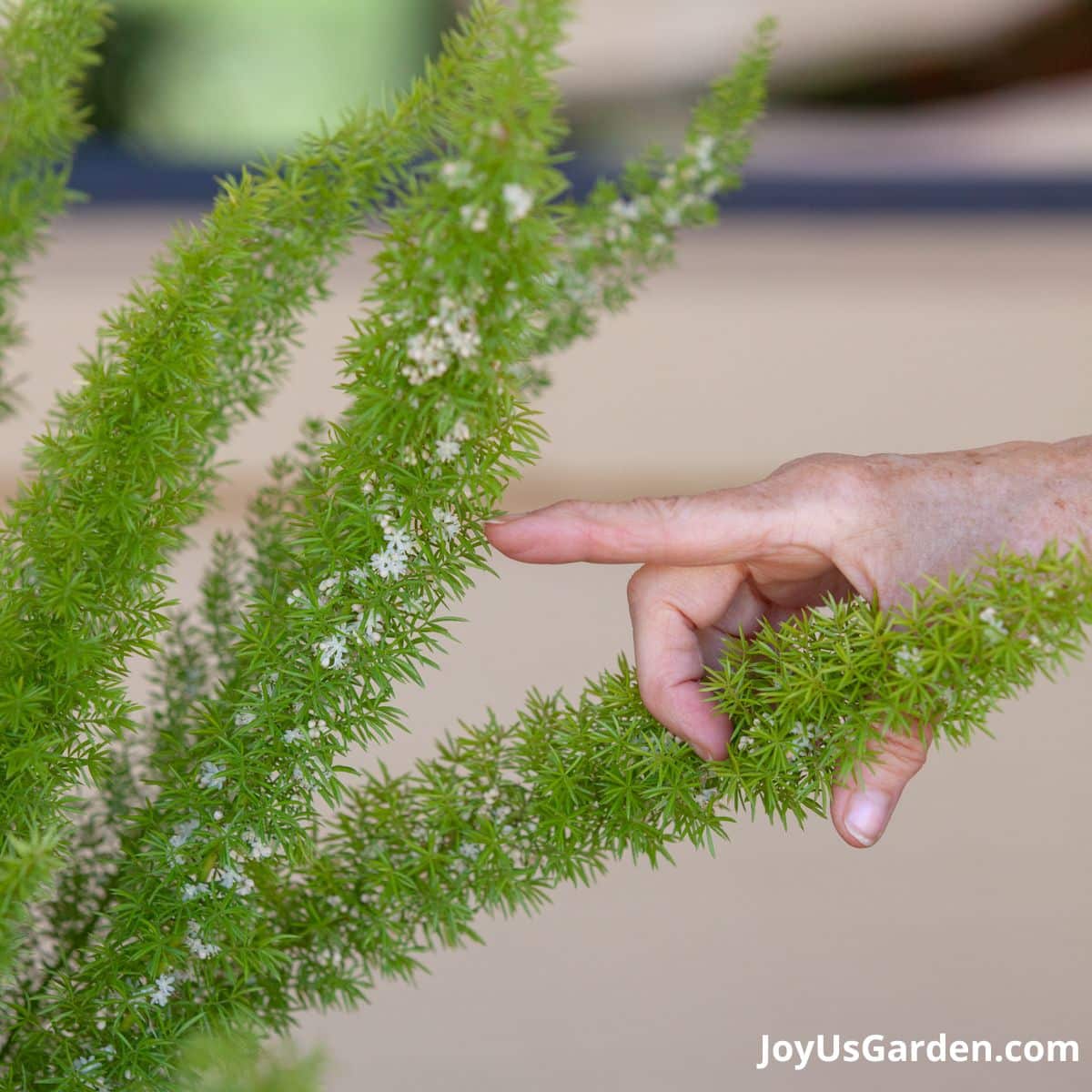
Pests
Mine has never gotten any. They’re fairly pest free but have been known to be infested by spider mites and scale insects so be on the lookout for these.
It’s best to take action and get them under control ASAP because they multiply and spread like crazy.
Foxtail Fern Leaves Turning Yellow
Mine occasionally got yellow leaves and stems in Santa Barbara as the plant grew. The outer leaves crowded out leaves at the base so I just pruned them off. In Tucson, I saw occasional yellow leaves in extended periods of low humidity and if the plants went too dry for too long.
Yellow leaves on plants are due to some sort of stress. The most common causes are related to watering and light exposure. Either too much water, too little water, too much sun, or not enough light. Pests and the need for fertilization are possibilities also.
How To Care For A Foxtail Fern In Winter
I now live in zone 9b. In the winter months, I leave mine alone. If we’re going through a dry spell, I give it supplemental water as needed.
Foxtail Fern Uses
You can use a Foxtail Fern in garden beds, rock gardens, containers, sidewalk strips, hanging baskets (its close relative the Sprengeri or Asparagus Fern is used more for this), and indoors as houseplants.
In Santa Barbara, they’re often times seen planted in sidewalk beds growing alongside Birds Of Paradise. This ornamental plant is really quite striking when planted en masse.
Perennials can provide quite the show and add color to the garden. Here is How To Plant Perennials Successfully.
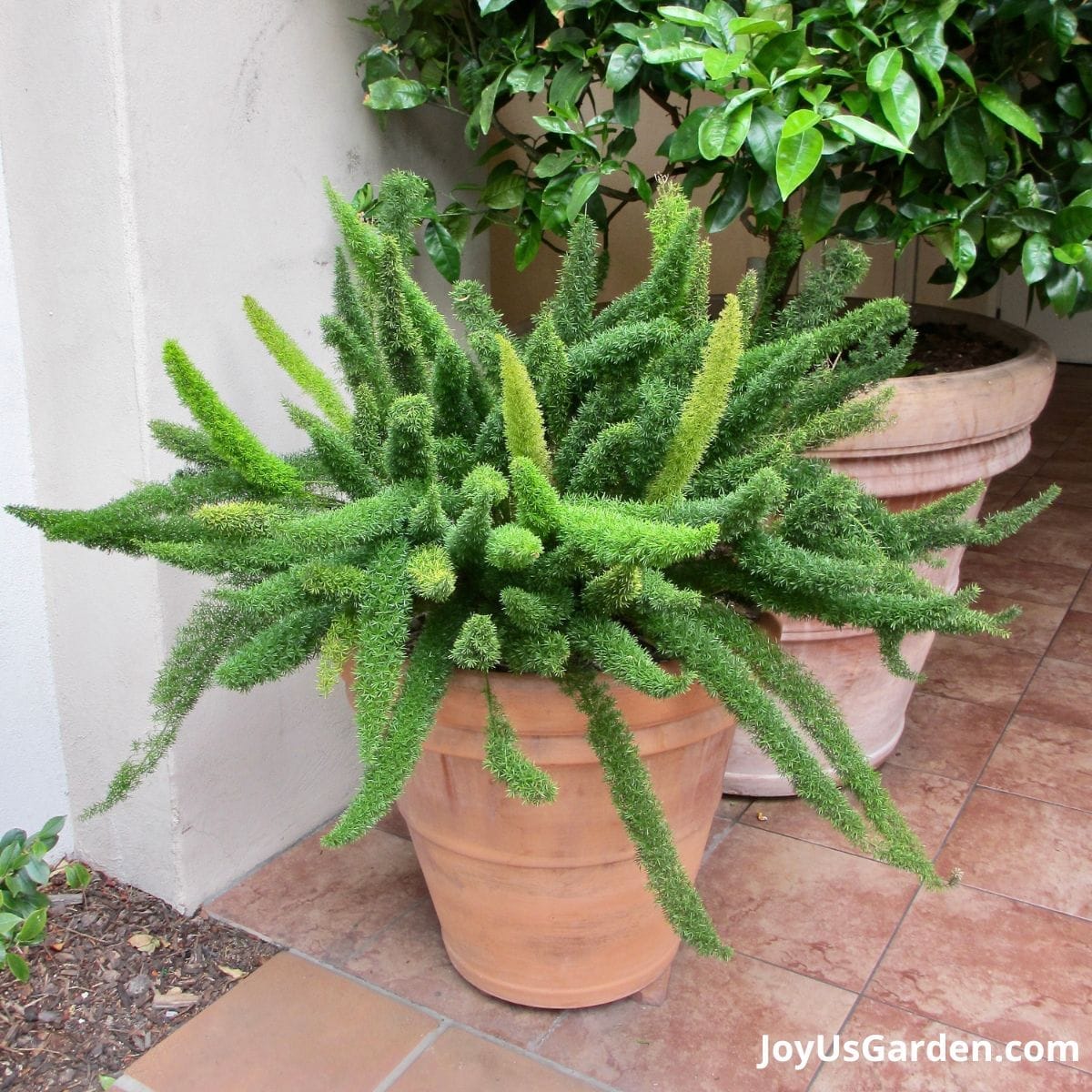
Foxtail Ferns In Containers
Foxtail Ferns are an excellent choice for containers. They make a great patio plant, and because of their form, are gorgeous accent plants.
You want to use well draining potting soil formulated for container plants that has been amended with rich organic materials. I prefer to use a combo of worm compost and compost. It’s best if the container has at least one drainage hole on the bottom of the pot so the excess water can readily flow out.
All the care points in this post apply to growing them in containers but mind the watering. Plants in containers tend to dry out faster than plants in the ground.
Foxtail Fern Companion Plants
Their roots and tubers get quite extensive as these plants age. They can easily crowd out other plants so you want to give them room in the landscape to spread.
In pots, they make a great solo planting or underplanted with annuals the first couple of years before the plant and root ball overtake.
Plants I’ve seen them planted with are Lantana, Bird Of Paradise, Mediterranean Fan Palm, Trailing Rosemary, and Jade Plants.
Planting companion plants? Here are the posts we have done on Bird Of Paradise, Lantana, and Rosemary.
Foxtail Fern Indoors
I have never grown one indoors, always as an outdoor plant, so I have no experience to share. There are true ferns on the market commonly sold in the houseplant trade that I imagine would make better indoor plants like the Boston Ferns.
If you want to give one a try indoors, make sure it’s in very bright light. It would appreciate being outdoors in the warmer months.
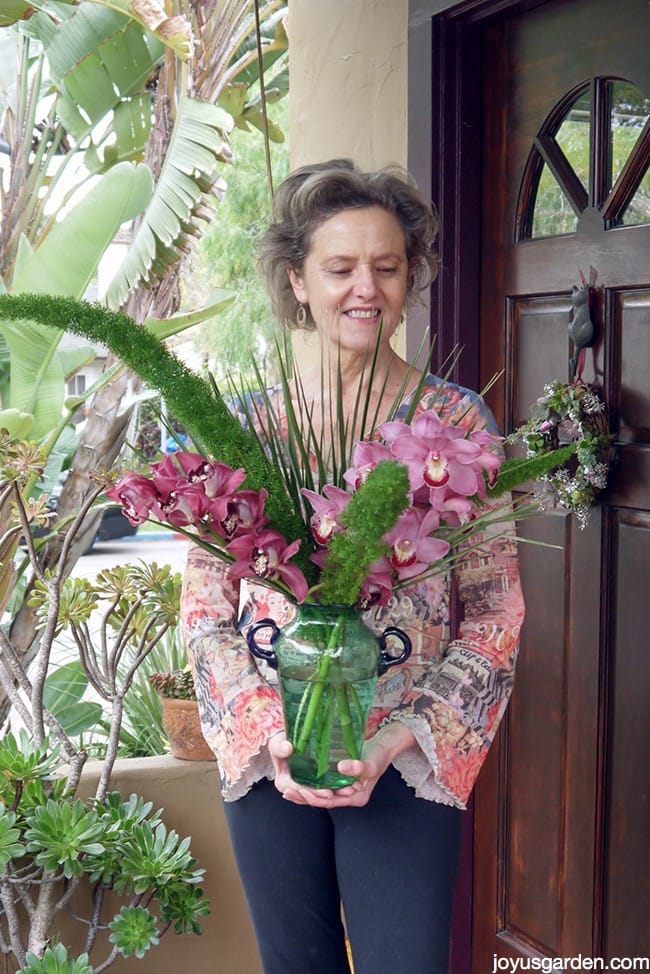
Foxtail Ferns In Flower Arrangements
Their plumy spear-like stems are excellent to use in flower arrangements and can last up to three weeks without yellowing or dropping a leaflet. I always have a cut flower arrangement or two in the house and this my friend, is the main reason I prune my Foxtail Fern!
Foxtail Fern FAQs
If in a suitable growing zone, yes. They are an evergreen perennial that stays green year-round.
Yes, the clumping habit of this plant does cause it to spread as it ages. Mature plants can reach 3′ wide.
Yes, Foxtail Ferns are considered to be toxic to both dogs and cats. I get my information on this subject from the ASPCA website.
They grow best in USDA zones 9-11. Temps below 20-25F will cause damage.
Outdoor Foxtail Ferns do best in indirect light. When growing in a coastal climate, they can take full sun.
Light shade is fine with filtered sunlight, aka bright shade. They won’t grow or look their best in deep shade.
I wouldn’t call them drought-tolerant but they do have a very thick root system with tubers than can store water. They don’t need much but look best with regular watering. How much water and how often depends on your climate.
It depends on your growing zone. They aren’t cold hardy below 20-25F.
I’ve only grown them in warmer climates and they’ve always survived winter. In case you don’t know, you can find your USDA plant hardiness zone here.
You could try bringing yours indoors for the colder months and see if it overwinters.
Dividing one is the fastest way. I’ve done a post on Dividing and Planting A Foxtail Fern which will give you the details.
Foxtail Fern Care Video Guide
This is a very old video! I’m in my backyard in Santa Barbara talking care:
If you like arty plants with a bohemian twist that you can practically ignore, then the Foxtail Fern or Myer Fern is for you. I now wish that I’d planted a row of them along that portion of the fence in my backyard because that one did so well and I love the look.
I think it’s time to get another one for my new home here in Tucson. I have just the spot in mind!
Happy gardening,


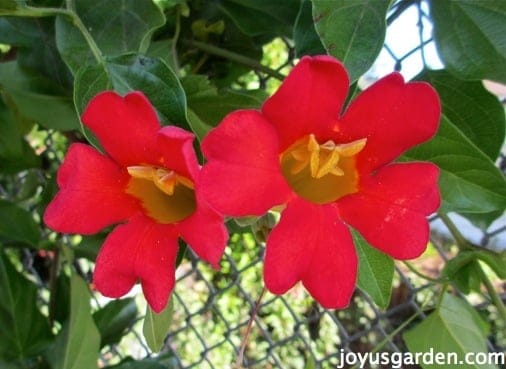
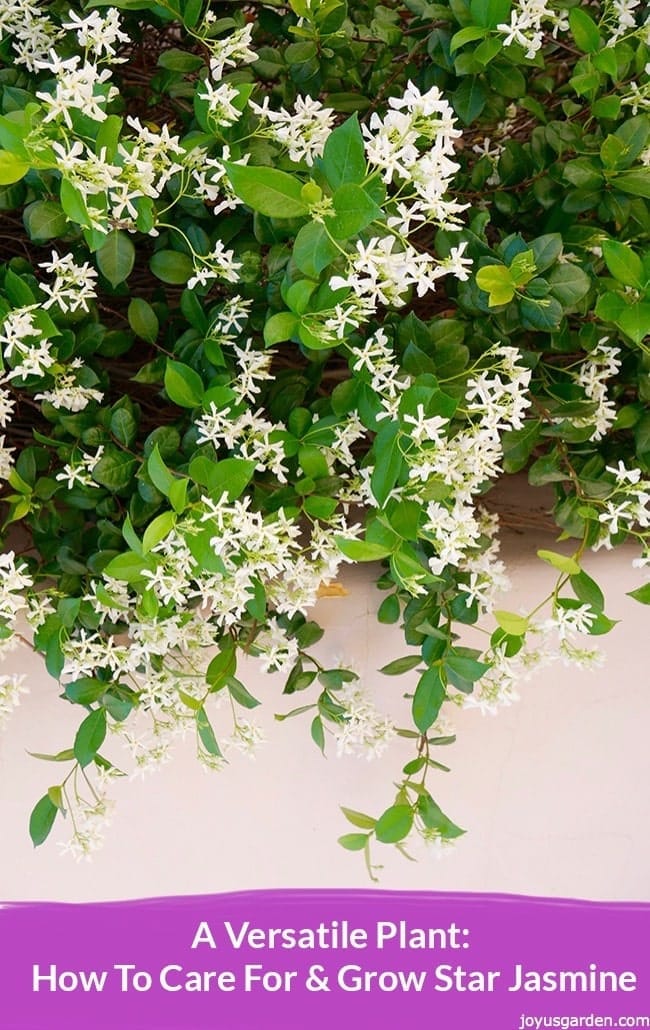

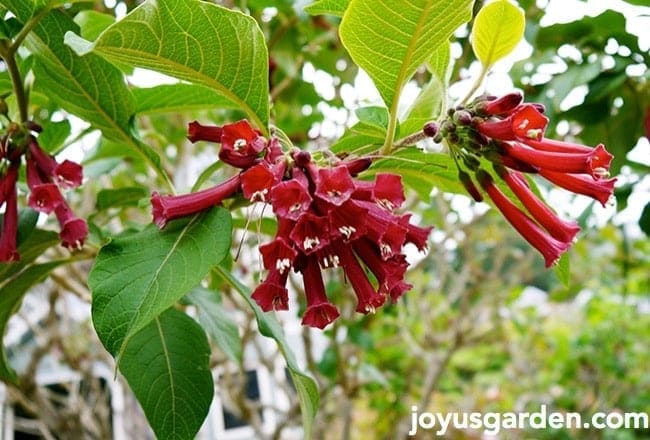
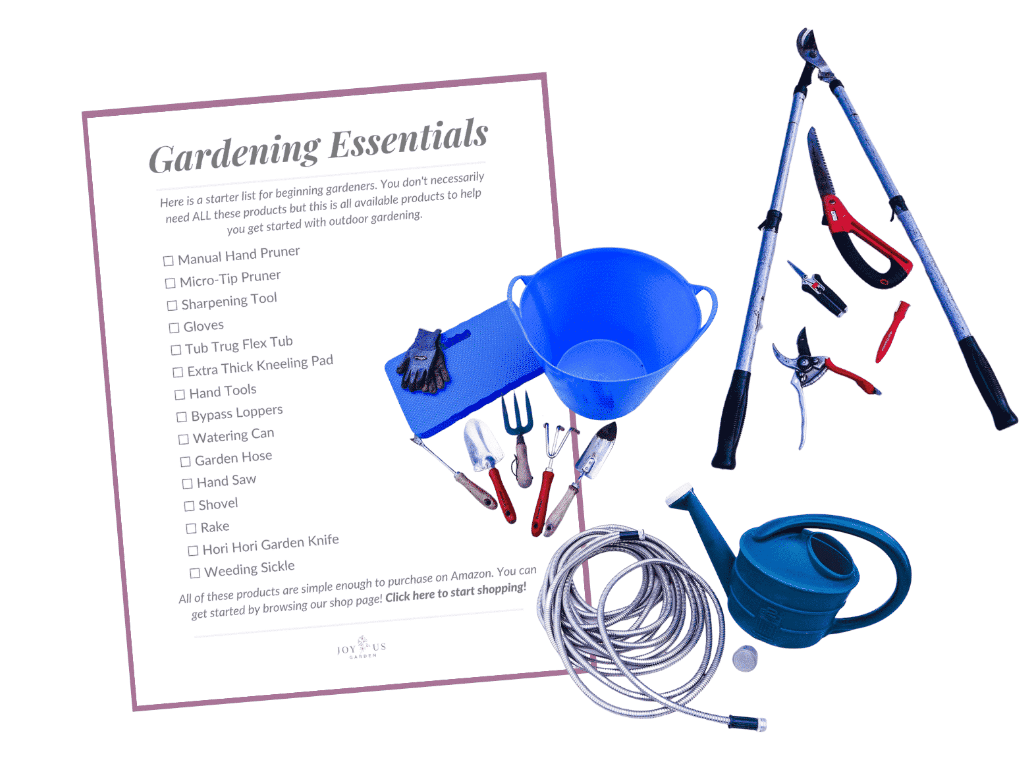
where can i get a start of this fern? i just love it..
Hi Teresa – I love this fern too, it just gets more interesting as it grows. I’m not sure who sells starts, but I know you can buy this plant in 4″ pots on amazon. I bought mine in a gallon pot. Nell
Hi, first, that fern is beautiful 🙂 but also, its a bit off topic, did you knit that beautiful sweater? If so, would you share what the pattern is? 🙂
Hi Jen – I’ve gotten a few comments on this poncho; many on the video. It actually belongs to a friend of mine who didn’t knit it herself. I love the colors! Nell
Hi from Toronto, Canada, Nell,
How are you?
Thank you for this interesting article.
I love plants and flowers, and even though here we don’t have the wonderful California weather all year round, I’m trying to have beautiful gardens.
This plant in particular caught my eyes and I will love to have one indoors.
The gardens here don’t sell this plant, and I’m wondering, if it’s possible for you send me, by mail, 1 seed to try.
Thank you and have a wonderful flowering summer.
Natalia
Hi Natalia – You’re welcome! I love this wacky but very tough plant too. I couldn’t ship them to Canada because it’s very hard to get a permit to do that. I don’t think any of the big growers ship to your beautiful country either. Nell
Hello! My foxtail is looking a little “spacey”. It actually favors an asparagus fern more than a foxtail. Any tips? Thanks
Hi Amia – Some depends on the environment it growing in. My Foxtails here in Tucson are less full than mine that grew in Santa Barbara. Also, age plays into it. They’re a bit slow to take off. Nell
My foxtail won’t grow! It’s sister is doing ok much better than this one. She has 6-8 inch tails, but this one only grows about 2-3 inches tall. I thought it was getting too much sun so I moved it and fertilized it but it still is not growing. What can I do to help her? I live in central Texas and I am making sure it gets plenty of water. These are in the ground not potted.
Hi Donna – I now live in Tucson AZ & my Foxtails grow slower here then they did in Santa Barbara. I compost them every spring & water regularly. Nell
Do foxtail ferns grow in Pa?
Hi Janet –
They are hardy in USDA Zones 9-11. You’ll need to winter them indoors. Nell
I love foxtail ferns and I grow them every summer in PA in pots on my deck however when I bring them in for the winter they die. Any suggestions?
Hi April – I don’t have any experience to share on this. I grew them outdoors year-round outdoors in Santa Barbara & now here in Tucson. Nell
Hello. my foxtail was left outside in 12 degree weather for 3 days before I got home to bring it in over the holiday. it’s now in the house but the stems are very very very dry and break off to the touch. it’s watered but I’m afraid it is in shock. I still have mosty green stems from the center but the rest are turning dark brown and dry. should I just leave it alone for the winter and see what it dies? or cut out the dead and briwb stems?